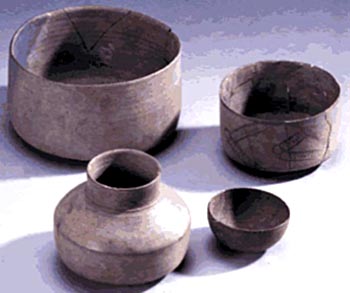 Painted Grey Ware comes after the Black and red ware culture. It is believed that it corresponds to the later Vedic period. According to historian B.B. Lal Hastinapura, Mathura, Ahichatra, Kampilya, Barnawa, Kurukshetra are associated with the Painted Gray Ware culture. The pottery style that was adopted in this culture is different from the pottery of the Iranian Plateau and Afghanistan.
Painted Grey Ware comes after the Black and red ware culture. It is believed that it corresponds to the later Vedic period. According to historian B.B. Lal Hastinapura, Mathura, Ahichatra, Kampilya, Barnawa, Kurukshetra are associated with the Painted Gray Ware culture. The pottery style that was adopted in this culture is different from the pottery of the Iranian Plateau and Afghanistan.
The Harappan culture was followed by a culture that was characterized by the use of Painted Grey Ware pottery. In the excavation that was conducted at Rupar in Ambala District it has come to notice that there was a gap between the end of the culture of Harappa and the beginning of the Painted Grey Ware culture. This type of pottery has been found in many places in northern Rajasthan, Punjab, west and central Uttar Pradesh. In Hastinapur in Meerut district a crude red ware overlies the ware. The painted grey ware occurs at Hastinapur and Rupar with red and black-and-red pottery. No burnt bricks are found.
This culture thrived in the first quarter of the first millennium B.C. This ware has been found in the regions were Aryans had settled. It is also believed that this ware was produced by the Aryans. Basically this ware is the ceramics which have been fired grey and then painted with black designs. It is believed that the grey colour is obtained by firing thin clay pots at a temperature of 800 degree Celsius.
This article is a stub. You can enrich by adding more information to it. Send your Write Up to content@indianetzone.com






































